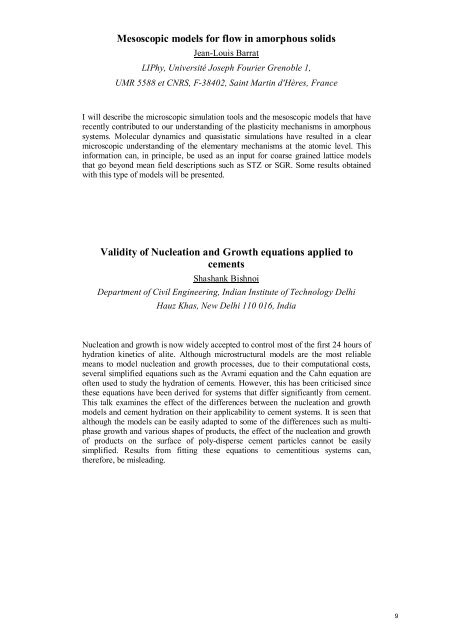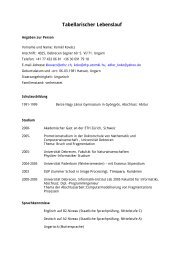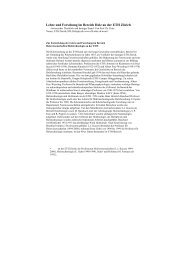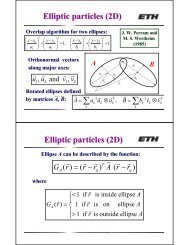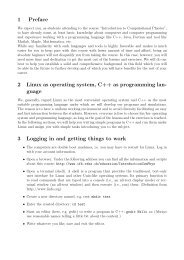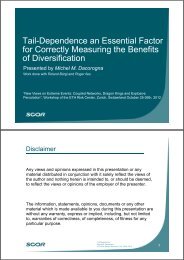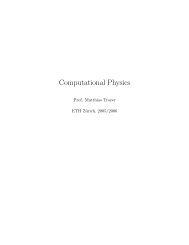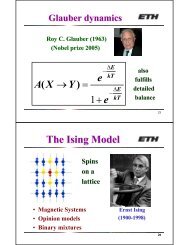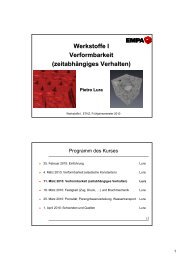Here - Institute for Building Materials - ETH Zürich
Here - Institute for Building Materials - ETH Zürich
Here - Institute for Building Materials - ETH Zürich
Create successful ePaper yourself
Turn your PDF publications into a flip-book with our unique Google optimized e-Paper software.
Mesoscopic models <strong>for</strong> flow in amorphous solidsJean-Louis BarratLIPhy, Université Joseph Fourier Grenoble 1,UMR 5588 et CNRS, F-38402, Saint Martin d'Hères, FranceI will describe the microscopic simulation tools and the mesoscopic models that haverecently contributed to our understanding of the plasticity mechanisms in amorphoussystems. Molecular dynamics and quasistatic simulations have resulted in a clearmicroscopic understanding of the elementary mechanisms at the atomic level. Thisin<strong>for</strong>mation can, in principle, be used as an input <strong>for</strong> coarse grained lattice modelsthat go beyond mean field descriptions such as STZ or SGR. Some results obtainedwith this type of models will be presented.Validity of Nucleation and Growth equations applied tocementsShashank BishnoiDepartment of Civil Engineering, Indian <strong>Institute</strong> of Technology DelhiHauz Khas, New Delhi 110 016, IndiaNucleation and growth is now widely accepted to control most of the first 24 hours ofhydration kinetics of alite. Although microstructural models are the most reliablemeans to model nucleation and growth processes, due to their computational costs,several simplified equations such as the Avrami equation and the Cahn equation areoften used to study the hydration of cements. However, this has been criticised sincethese equations have been derived <strong>for</strong> systems that differ significantly from cement.This talk examines the effect of the differences between the nucleation and growthmodels and cement hydration on their applicability to cement systems. It is seen thatalthough the models can be easily adapted to some of the differences such as multiphasegrowth and various shapes of products, the effect of the nucleation and growthof products on the surface of poly-disperse cement particles cannot be easilysimplified. Results from fitting these equations to cementitious systems can,there<strong>for</strong>e, be misleading.9


